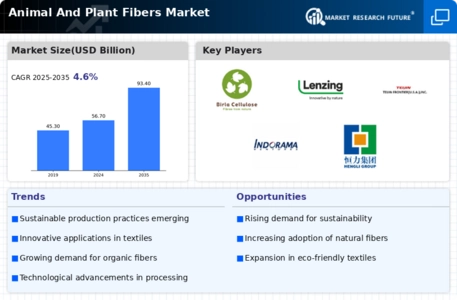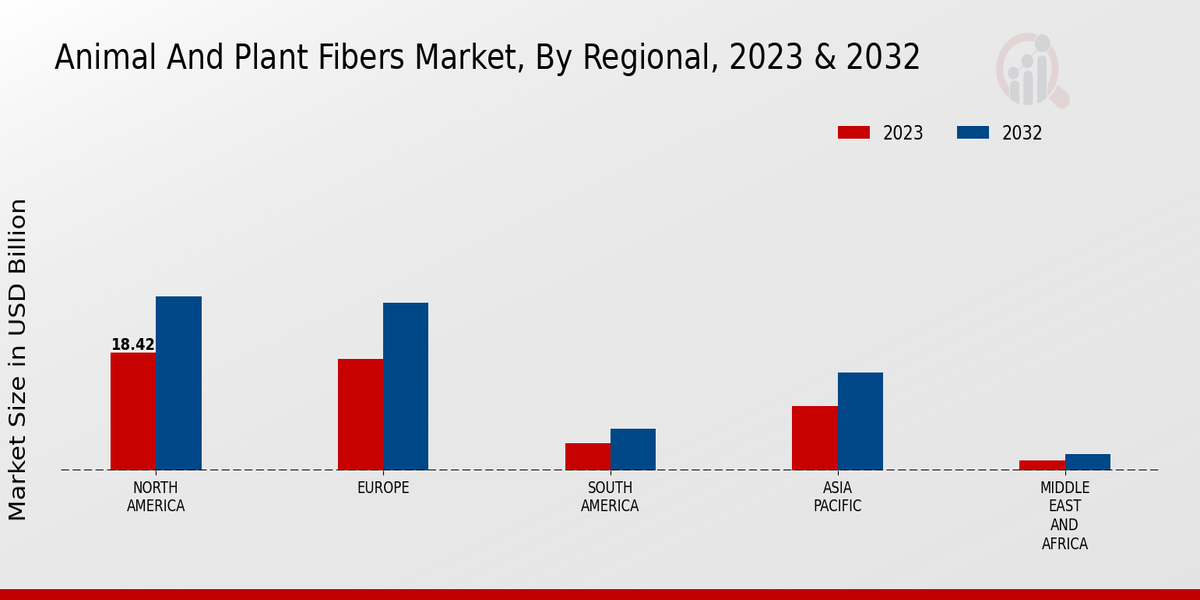Global Trade Dynamics
Global trade dynamics significantly impact the Global Animal And Plant Fibers Market Industry. Trade agreements and tariffs influence the flow of raw materials and finished products across borders. For instance, countries rich in natural fiber resources, such as Australia and China, play a crucial role in supplying the global market. Changes in trade policies can either facilitate or hinder market access for various fiber products. As the industry adapts to these dynamics, companies are likely to explore new markets and diversify their supply chains to mitigate risks associated with trade fluctuations. This adaptability is essential for maintaining competitiveness in a globalized economy.
Sustainable Practices
The Global Animal And Plant Fibers Market Industry is increasingly influenced by the shift towards sustainable practices. Consumers are becoming more environmentally conscious, leading to a rising demand for natural fibers over synthetic alternatives. This trend is evident in the textile sector, where brands are prioritizing eco-friendly materials. For instance, the market is projected to reach 56.7 USD Billion in 2024, driven by the growing preference for organic cotton, wool, and hemp. As sustainability becomes a key purchasing criterion, manufacturers are adapting their supply chains to incorporate more sustainable practices, which could enhance their market competitiveness.
Consumer Health Awareness
Consumer health awareness is increasingly shaping the Global Animal And Plant Fibers Market Industry. As individuals become more informed about the benefits of natural fibers, there is a growing inclination towards products that promote health and well-being. Natural fibers are often perceived as hypoallergenic and more breathable compared to synthetic alternatives, making them preferable for clothing and home textiles. This trend is reflected in the market's projected growth, as consumers prioritize products that align with their health-conscious lifestyles. The emphasis on wellness is likely to drive innovation in product development, encouraging manufacturers to highlight the health benefits of their natural fiber offerings.
Market Growth Projections
The Global Animal And Plant Fibers Market Industry is poised for substantial growth, with projections indicating a market size of 56.7 USD Billion in 2024 and an anticipated increase to 93.4 USD Billion by 2035. This growth trajectory suggests a compound annual growth rate of 4.64% from 2025 to 2035. The increasing demand for sustainable and natural fiber products across various sectors, including textiles and construction, is likely to drive this expansion. Additionally, the ongoing innovations in fiber technology and processing methods may further enhance market dynamics, positioning the industry for continued success in the coming years.
Technological Advancements
Technological advancements play a pivotal role in shaping the Global Animal And Plant Fibers Market Industry. Innovations in fiber processing and production techniques are enhancing the quality and efficiency of fiber manufacturing. For example, advancements in biotechnology are enabling the development of new fiber blends that offer improved performance characteristics. This is particularly relevant in the production of specialty fibers, which are gaining traction in various applications, including automotive and construction. As the market evolves, these technological improvements are likely to contribute to a projected growth rate of 4.64% CAGR from 2025 to 2035, reflecting the industry's adaptability to changing consumer needs.
Rising Demand for Natural Fibers
The Global Animal And Plant Fibers Market Industry is experiencing a notable increase in demand for natural fibers, driven by their versatility and biodegradability. Industries such as fashion, home textiles, and automotive are increasingly incorporating materials like wool, silk, and jute into their products. This trend is supported by a growing consumer preference for products that are not only functional but also environmentally friendly. By 2035, the market is expected to expand to 93.4 USD Billion, indicating a robust shift towards natural fibers. This rising demand is prompting manufacturers to invest in sustainable sourcing and production methods, further solidifying the market's growth trajectory.

















Leave a Comment